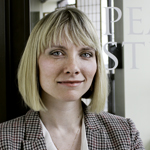When Scott Addis founded the Addis Group in 1990, little did he know that it would represent his first step in a lifetime journey of transforming the insurance industry. His formula is a four-step enterprise risk-assessment process focused on the identification and mitigation of exposures. Rather than attempting to win business through the insurance-bidding process, Addis cleared a path previously reserved for the risk managers of Fortune 500 companies: a risk-management-audit report supported by a risk profile improvement action plan. In creating this creative and diagnostic model, and openly sharing it with others in the industry, Addis has established his Pennsylvania company as one of the most respected risk-management consultants and insurance brokers in the United States.
What do you see as the status quo in the insurance industry?
Scott Addis: Today, the vast majority of insurance agents, brokers, and carriers have been taught that their primary job is securing and delivering competitive products and related services. It is the focus on price and product that has tainted the industry’s reputation and led to commoditization. Commoditization occurs when the consumer perceives little or no distinguishable difference between products, services, and resources. When this happens, price becomes the primary differentiator. With all due respect, they are missing the mark. The foundation of the insurance industry is built upon helping clients protect their assets. Insurance is just one arrow in the quiver.
You are creating a revolution in the industry. What is it all about?
Addis: The purpose of the revolution is how to help the multitasking CEO, CFO, and HR manager identify, measure, and prioritize risk. Due to time constraints, these well-intentioned business leaders are only able to allocate 2 to 5 percent of their available time on this essential function. It is my mission to transform insurance agents and brokers to enable them to become outsourced risk managers for organizations who do not have the luxury of an in-house risk manager. Once transformed, these people view their primary role as designing and building risk-management programs for their clients—programs that will not only protect the organization’s assets, but positively impact the bottom line.
98%
Addis Group’s client-retention rate, reflecting the firm’s dedication to keeping its customers
How does the process work?
Addis: My four-step process, the Beyond Insurance Process, is simple yet revolutionary. It begins with a curiosity and desire to understand the inner workings of a business. If one does not understand the business and its issues, it is not possible to adequately perform exposure identification. The design and procurement of insurance is essential; it is an art. However, it is not the cornerstone of deep, long-lasting, and mutually profitable relationships.
Can you describe each step?
Addis: Step one is a discovery process, and is all about learning the business and its risk issues. Step two is considering methods to manage and mitigate these risks. Step three is the implementation process. Step four is monitoring the success of the plan. Far too often, the well-intended insurance professional starts at step three—program implementation. They forget the importance of discovering the customer.
What is the difference between insurance and risk management?
Addis: Insurance is all about risk transfer. Risk management, on the other hand, is the assessment and prioritization of risks followed by the application of resources to minimize, monitor, and control the probability and/or impact of loss. There is a big difference. It is the combination that impacts the bottom line of an organization.
What I’ve Learned
Lessons in Leadership
From Scott Addis
1.
“Leaders serve the people they lead. Their style represents a selfless approach to leadership, serving others—including employees, customers, community, and country.”
2.
“Dare to be different. Differentiation is one of the most important strategic and tactical activities in which individuals and companies must engage.”
3.
“Listen to the customer. Deep relationships form when a customer has the opportunity to share his or her dreams, goals, passions, and aspirations.”
Why has this model been so successful for the Addis Group?
Addis: The Addis Group continues to thrive in a transactional and commodity-driven business because of its unique value proposition, culture of creativity and innovation, and focus on the customer. We have received significant awards, including being recognized in the “Philadelphia 100,” a list of the fastest-growing firms in the Philadelphia region, and as the Business of the Year for Customer Service Excellence by the Greater Philadelphia Chamber of Commerce. We were also honored to be recognized as National Underwriter magazine’s 2003 Agency of the Year, the highest distinction in the industry, and as one of the best places to work in Pennsylvania. The Addis Group boasts $16 million in revenue and a staff of 60 people.
What strategies are you personally using to transform the industry?
Addis: A few years back, I formed a coaching, mentoring, and performance-enhancement company that helps individuals and companies [learn the] Beyond Insurance Process. Today, more than 700 individuals have gone through Beyond Insurance workshops. I also put together a network of innovative agencies across the United States to share ideas and resources. This group uses proprietary tools and strategies to differentiate themselves in their quest to deliver a unique customer experience.
I have also created the Certified Risk Architect (CRA) designation as well as a quantifiable risk assessment tool, the Intelligence Quotient for Risk Management. The CRA program has a 12-member faculty and a certification board filled with legends in the industry. My most recent pride and joy is Reach Your Peak, a six-month producer performance-enhancement program focused on six skill sets: visioning and goal setting, value proposition, relational capital, prospect research and qualification, the customer experience, and cross selling.















